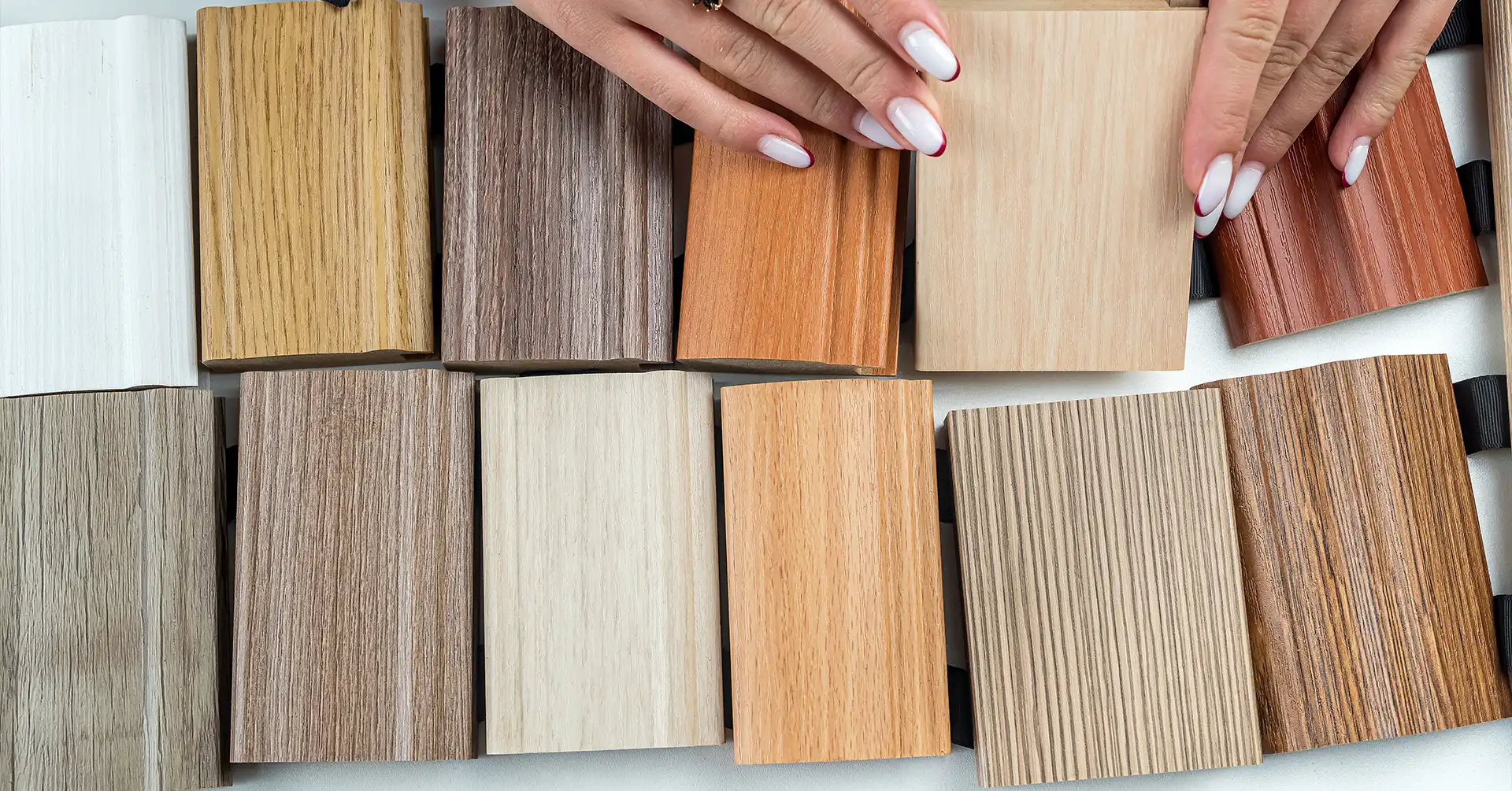Hello, my wonderful readers! Unveiling the mysteries behind two commonly used wood-based materials, MDF (Medium Density Fiberboard) and Particle Board, this blog aims to comprehensively understand their characteristics and highlight their key differences. As discerning consumers and DIY enthusiasts navigate the furniture and construction materials world, it becomes crucial to grasp the distinct features that set these two apart. MDF, celebrated for its uniformity and smooth surface, takes center stage in our exploration. We will delve into its composition, manufacturing process, and the applications that make it a popular choice for various projects. Conversely, with its affordability and eco-friendly attributes, Particle Board emerges as a formidable contender. We’ll dissect its structure, strengths, and the unique scenarios where it outshines its counterparts. This engaging discussion will empower readers to make informed decisions when selecting materials for their ventures, whether crafting custom furniture, renovating interiors, or engaging in construction projects. With a spotlight on functionality, durability, and aesthetics, we aim to guide you through the labyrinth of choices, ensuring you emerge with a clear understanding of the MDF Vs Particle Board debate. So, buckle up for an enlightening journey into wood-based materials!
What is MDV?
MDV, which stands for Medium Density Ventilation, is a cutting-edge technology revolutionizing the field of air circulation and ventilation systems. This innovative approach enhances indoor air quality and ensures optimal environmental conditions in various spaces. Unlike traditional ventilation methods, MDV employs state-of-the-art techniques for superior efficiency and performance.
At its core, MDV utilizes advanced medium-density materials to streamline the airflow within a given area. These materials, often integrated into ductwork and ventilation systems, play a pivotal role in optimizing the distribution of fresh air while efficiently removing stale air and contaminants. The active nature of MDV allows for real-time adjustments, adapting to changing conditions and ensuring a constant supply of clean, well-ventilated air.
The MDV system boasts a range of applications, from residential buildings to commercial spaces and industrial facilities. By focusing on actively managing air density, MDV not only enhances comfort but also contributes significantly to energy efficiency. This technology aligns with modern sustainability goals by minimizing energy consumption while maintaining optimal air quality standards.
In summary, MDV represents a groundbreaking approach to ventilation, leveraging medium-density materials to create a dynamic and efficient air circulation system. As the demand for healthier indoor environments grows, MDV stands as a beacon of innovation, offering a proactive solution to air quality management challenges.
Advantages of MDF | MDF Vs Particle Board
Medium Density Fiberboard (MDF) stands out as a preferred choice in the world of woodworking and construction, garnering widespread adoption due to its numerous advantages. Understanding these benefits is crucial for anyone considering MDF for their projects.
Versatility in Applications:
MDF’s adaptability is a standout feature, as it can be seamlessly employed in many applications. From furniture manufacturing and cabinetry to interior molding and paneling, its uniform composition allows for precise cuts and intricate designs, catering to diverse project requirements.
Smooth and Homogeneous Surface:
The manufacturing process of MDF results in a smooth and consistent surface, free from the natural imperfections found in solid wood. This characteristic makes it an ideal canvas for painting, veneering, or laminating, ensuring a flawless finish in various aesthetic endeavors.
Precision in Machining:
Craftsmen value MDF for its machinability. It excels in precision cutting, routing, and shaping, making it an excellent choice for intricate designs and detailed woodworking projects. This quality enables artisans to bring their creative visions to life with accuracy.
Stability and Resistance:
MDF exhibits stability in different environmental conditions, resisting warping and shrinking that can occur in solid wood. Moreover, its homogenous structure contributes to enhanced screw-holding capabilities, ensuring durability in assembled structures.
Cost-Effective Alternative:
Compared to some solid wood options, MDF provides a cost-effective solution without compromising quality. Its affordability makes it an attractive choice for both DIY enthusiasts and professional craftsmen, offering an excellent balance between performance and budget considerations.
Eco-Friendly Composition:
MDF often incorporates recycled wood fibers, contributing to its eco-friendly profile. By utilizing wood particles and residues from other manufacturing processes, MDF minimizes waste and promotes sustainable practices in woodworking.
The advantages of MDF encompass its versatility, smooth surface, precision machining capabilities, stability, cost-effectiveness, and eco-friendly composition. As a result, MDF continues to be a go-to material for a wide range of projects, providing a reliable and efficient solution for craftsmen and builders alike.
Disadvantages of MDF | MDF Vs Particle Board
Medium Density Fiberboard (MDF), while widely utilized in woodworking and construction, has disadvantages that warrant consideration for prospective users.
Susceptibility to Moisture:
One of the primary drawbacks of MDF is its vulnerability to moisture. MDF can swell and lose structural integrity when exposed to water or high humidity levels. This limitation makes it unsuitable for applications in damp areas, such as bathrooms or kitchens.
Not Ideal for Heavy Loads:
MDF has limitations when it comes to bearing heavy loads. It may not be the optimal choice for structural components or applications requiring significant weight-bearing capacity, as it can compress and sag over time.
Limited Screw-Holding Strength:
While MDF is known for its machinability, it has a relatively lower screw-holding strength than other wood products. This can pose challenges in applications where robust fastening is crucial, potentially leading to weaker joints over time.
Contains Formaldehyde:
The adhesive used in MDF manufacturing often contains formaldehyde, a volatile organic compound (VOC). Prolonged exposure to formaldehyde emissions may pose health concerns, making it important to consider ventilation and safety precautions when working with MDF.
Prone to Chipping:
MDF’s composition, though smooth, can be prone to chipping, especially along the edges. Careful handling and proper finishing techniques are necessary to minimize the risk of chipping during fabrication or installation.
Difficulty in Repairing:
Repairing damaged MDF can be challenging. Unlike solid wood, MDF doesn’t respond well to refinishing or repairing surface imperfections. Once damaged, replacement may be a more practical solution than attempting repairs.
Limited Load-Bearing Span:
MDF’s limited span strength can be a concern in certain structural applications. For projects that require materials with high load-bearing capabilities, alternatives like plywood or solid wood may be more suitable.
All things considered, medium density fiberboard (MDF) has many benefits, but people should weigh these against its moisture sensitivity, limited load bearing capacity, lower screw-holding strength, formaldehyde content, chipping tendency, difficulty in repairing, and span limitations before using MDF for a given project.
What is a Particle Board?
Particle Board, a widely used engineered wood product, takes center stage in construction and furniture manufacturing. Composed of wood particles, such as wood chips, sawmill shavings, and even sawdust, it undergoes a meticulous manufacturing process that involves binding these particles together using synthetic resin or adhesive under high temperature and pressure.
The production process begins with collecting wood particles, which are then mixed with the chosen resin or adhesive. This mixture is carefully spread on a flat surface, forming a thick mat. Subsequently, the mat undergoes compression through a combination of heat and pressure, consolidating the particles into a dense, sturdy board. The final product often features a smooth and uniform surface, making it a versatile material for various applications.
Particle Board distinguishes itself by offering cost-effectiveness without compromising strength. Its composition ensures homogeneity, and the absence of natural grain patterns facilitates easy cutting and shaping during fabrication. Furniture manufacturers appreciate its suitability for laminating, veneering, or painting, providing design and aesthetics flexibility.
Despite its widespread use, particle board has limitations, such as vulnerability to moisture. Therefore, understanding its properties and applications becomes crucial for informed decision-making in construction and furniture projects. Particle Board emerges as a vital component in the repertoire of engineered wood products, contributing to the efficiency and affordability of diverse woodworking endeavors.
Advantages of Particle-board | MDF Vs Particle Board
article Board, a versatile and economical engineered wood product, presents many advantages that make it a popular choice in various construction and furniture applications.
Cost-Effective Solution:
One of the most significant advantages of Particle Board is its affordability. It provides a cost-effective alternative to solid wood and other engineered wood products, making it an attractive option for budget-conscious projects.
Lightweight Construction:
Particle Board’s composition, featuring wood particles bonded together with resin, results in a lightweight material. This characteristic facilitates easy handling during fabrication and installation, making it particularly suitable for applications where weight is a consideration.
Uniform and Smooth Surface:
The manufacturing process of Particle Board yields a uniform and smooth surface, making it conducive to a variety of finishes. Whether painted, veneered, or laminated, Particle Board can achieve a consistent and aesthetically pleasing appearance.
Versatility in Applications:
Particle Board’s versatility allows it to be used in various applications, ranging from furniture manufacturing and cabinetry to shelving and interior paneling. Its adaptability makes it a versatile solution for various woodworking projects.
Ease of Machining:
Particle Board is easy to machine, cut, and shape. This quality simplifies the fabrication process, enabling manufacturers and craftsmen to achieve desired designs and configurations efficiently and precisely.
Eco-Friendly Practices:
Many Particle Boards incorporate recycled wood particles, promoting sustainable and eco-friendly practices in woodworking. Using wood residues and by-products, Particle Board minimizes waste and contributes to environmental conservation.
Stability in Various Environments:
Particle Board exhibits stability in different environmental conditions. Unlike solid wood, it is less prone to warping or shrinking, making it suitable for applications in varying climates.
Consistent Density and Strength:
The homogeneity of the Particle Board contributes to consistent density and strength across the entire board. This characteristic ensures predictability in its performance, allowing for reliable use in various construction and furniture projects.
Particle Board’s advantages include cost-effectiveness, lightweight construction, a uniform surface, versatility, ease of machining, eco-friendly practices, stability, and consistent density and strength. These qualities collectively position Particle Board as a practical and efficient choice for various woodworking endeavors.
Disadvantages of Particle-board | MDF Vs Particle Board
Despite its widespread use and affordability, Particle Board comes with several disadvantages that necessitate careful consideration for those opting to use it in various construction and woodworking projects.
Moisture Sensitivity:
One of the primary drawbacks of the Particle Board is its susceptibility to moisture. When exposed to water or high humidity, the Particle Board can swell, warp, and lose structural integrity. This makes it unsuitable for applications in damp areas, such as kitchens and bathrooms.
Limited Strength and Durability:
Particle Board is generally less sturdy than other wood products, which restricts its use in applications requiring high strength or durability. It may not be ideal for projects involving heavy loads or extensive wear and tear.
Weak Screw-Holding Capacity:
The Particle Board’s composition, with wood particles held together by resin, results in a weaker screw-holding capacity than sturdier alternatives. This can lead to challenges in creating robust joints, particularly in load-bearing structures.
Formaldehyde Emissions:
The adhesive manufacturing Particle Board often contains formaldehyde, a volatile organic compound (VOC). Prolonged exposure to formaldehyde emissions can pose health concerns, necessitating proper ventilation and safety precautions when working with or using Particle Board.
Limited Resistance to Impact:
Particle Boards are more susceptible to chipping and damage upon impact than other wood products. Careful handling during fabrication and installation is essential to prevent surface imperfections.
Difficulty in Repair:
Repairing the Particle Board can be challenging, especially when addressing extensive damage. Unlike solid wood, Particle Board may respond poorly to refinishing or repair attempts, often necessitating replacement.
Environmental Considerations:
While some Particle Boards incorporate recycled wood particles, the production process can still contribute to environmental concerns. The use of adhesives and resins may involve chemicals that have environmental implications, highlighting the need for responsible disposal practices.
Limited Load-Bearing Capacity:
The Particle Board’s load-bearing capacity is limited compared to some alternatives. In applications requiring substantial weight support, such as certain furniture pieces or structural components, alternative materials like plywood or solid wood may be more suitable.
The disadvantages of the Particle Board include moisture sensitivity, limited strength and durability, weak screw-holding capacity, formaldehyde emissions, susceptibility to impact damage, difficulty in repair, environmental considerations, and limited load-bearing capacity. These factors should be carefully weighed against the benefits when deciding whether to use Particle Board for specific projects.
MDF Vs Particle Board: What is the Difference?
Distinguishing between Medium Density Fiberboard (MDF) and Particle Board is essential for anyone navigating the vast landscape of woodworking and construction materials. MDF, a versatile composite, and Particle Board, a cost-effective alternative, exhibit notable differences in composition, strength, and applications.
MDF, crafted from wood fibers bonded with resin under heat and pressure, stands out for its density and uniform texture. This engineered wood product excels in applications where a smooth and consistent surface is paramount, making it a preferred choice for furniture and cabinet making. Its homogenous structure allows for intricate cuts and detailed designs, making it a favorite among craftsmen seeking precision.
On the other hand, Particle Board, composed of wood particles like chips and sawdust bound together with resin, boasts cost-efficiency as its key advantage. While it may lack the density of MDF, Particle Board is renowned for its affordability and lighter weight. It finds common use in low-impact applications such as shelving, underlayment, and economical furniture.
The differences between MDF and Particle Board extend to their durability and resistance to moisture. MDF, being denser, tends to fare better in humid environments, whereas Particle Board may be susceptible to swelling and warping when exposed to moisture.
The choice between MDF and Particle Board hinges on specific project requirements. MDF’s density and smooth finish make it ideal for precision projects, while Particle Board’s cost-effectiveness appeals to those seeking economical solutions. Understanding these distinctions empowers craftsmen, builders, and DIY enthusiasts to make informed decisions based on the unique demands of their endeavors.
MDV Vs Particle Board In Tabular Format
| MDF | Particle-Board | |
| Look | MDF has a smooth finish as it consists of wood grains of the same size. | Particle boards do not have a smooth surface as they consist of wood shavings and chips. |
| Density | MDF has a higher density level than particle board. | Particle boards have a lesser density level. |
| Strength | MDF is fairly stronger than particle board. | The particle board could be stronger. |
| Durability | MDF is quite durable. | Particle boards are relatively less durable. |
| Weight | Heavier than particle boards | Lightweight. |
| Moisture: | More resistance to water. | Less resistance to water. |
| Lifespan | MDF can remain in proper condition for up to 10 years. | Particle boards can last for up to 25 years. |
| Price | Costlier than particle board. | Cheaper. |
Conclusion
The MDF vs Particle Board debate illuminates the nuanced choices that craftsmen, builders, and DIY enthusiasts face when selecting materials for their projects. Medium Density Fiberboard (MDF) and Particle Board, while both engineered wood products, diverge in crucial aspects that shape their suitability for diverse applications.
MDF, with its uniform composition and smooth surface, emerges as the preferred choice for projects demanding precision and a flawless finish. Its versatility in applications, machinability, and stability make it an excellent option for furniture, cabinetry, and intricate woodworking endeavors. However, caution is warranted in environments with high moisture levels.
On the other hand, Particle Board celebrated for its cost-effectiveness and lightweight construction, is a pragmatic choice for budget-conscious projects. Its versatility, ease of machining, and consistent density make it suitable for a broad spectrum of applications. Yet, its susceptibility to moisture, limited strength, and weaker screw-holding capacity necessitates thoughtful consideration in certain use cases.
Ultimately, the decision between MDF and Particle Board hinges on project requirements, budget constraints, and environmental conditions. By understanding the unique advantages and disadvantages of each material, individuals can make informed choices that align with the specific demands of their woodworking or construction endeavors. The MDF vs Particle Board dilemma underscores the importance of weighing these factors judiciously, ensuring the chosen material aligns seamlessly with the envisioned outcome of the project.
Read More:
Dog’s Boarding Essentials: A Guide to Packing for Your Pet
Best Air Purifier That Will Transform Your Indoor Air Quality!






